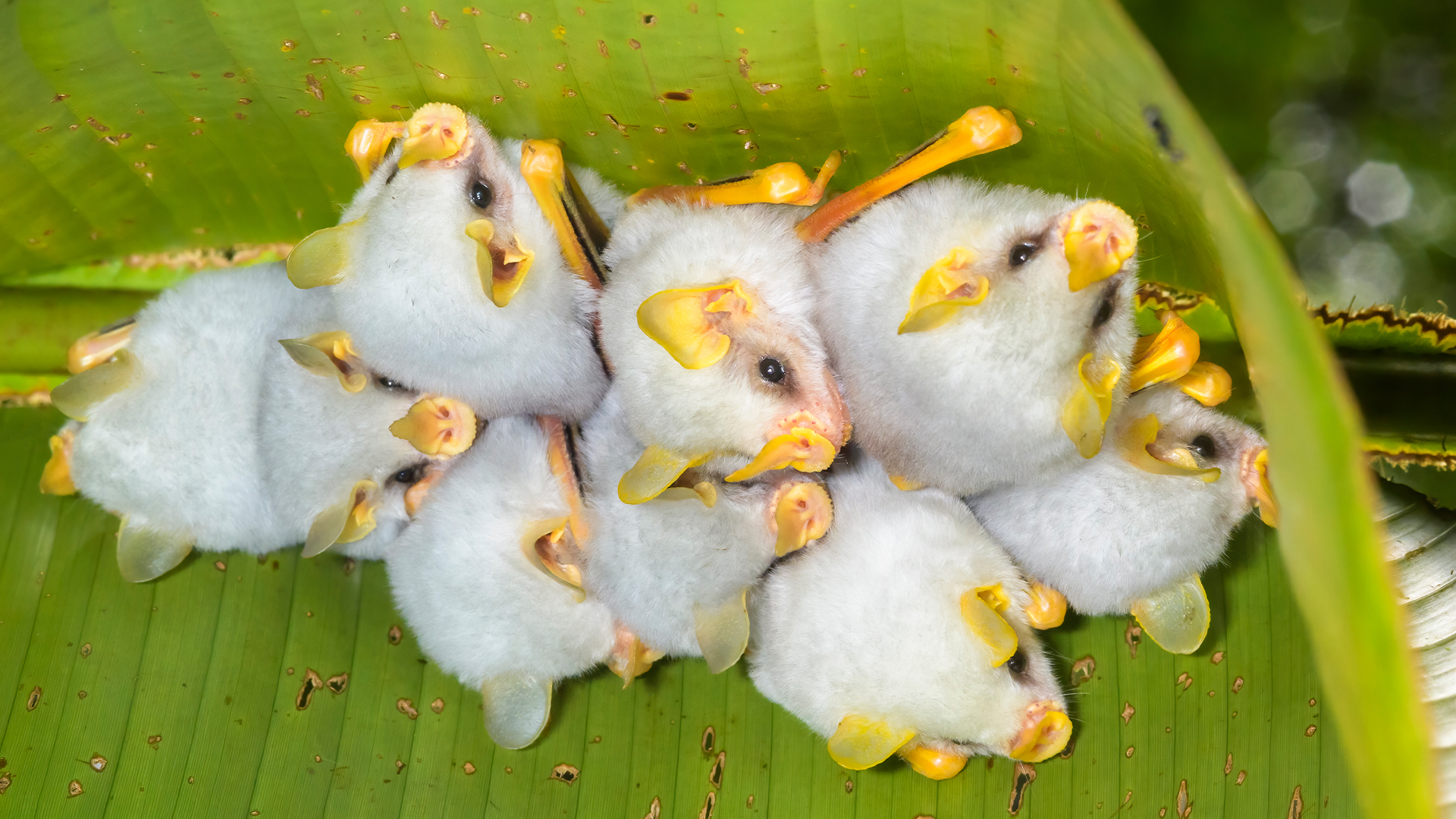Honduran white bats: The fluffy little bats that roost together in leaf tents
These tiny white bats, which can construct a leaf-made tent, are extremely picky eaters.

Name: Honduran white bat (Ectophylla alba)
Where it lives: Lowland rainforests of Central America
What it eats: Figs
Why it is awesome:
With fluffy white fur, a large yellow nose and ears, and weighing just 0.02 pound (9 grams), the Honduran white bat has got to be one of the cutest bats out there. It is just one of six bat species with an all-white coat, and it is easily distinguished from the others by its adorable upturned nose. It can be found in Central America from Honduras to Panama, and overlaps with only one other white bat, the northern ghost bat (Diclidurus albus).
As well as its endearing looks, the Honduran white bat is known for its ability to construct "tents" from large plant leaves, a behavior it shares with two dozen other bat species — less than 2% of the roughly 1,400 described bat species. Upon finding a suitable plant leaf, usually in the flowering plant genus Heliconia, the Honduran white bat will nibble at and cut the leaf's side veins. This causes the leaf to fold down and create a little tent, from which the bats can hide from predators.
Sometimes, multiple bats will cling to a single leaf, where they can rest during the day. Group sizes can vary from one bat to up to 17 individuals.
Sign up for the Live Science daily newsletter now
Get the world’s most fascinating discoveries delivered straight to your inbox.
Researchers previously thought that males might construct the tents in order to attract females for mating, but a 2006 study published in the journal Acta Chiropterologica provided the first evidence that females also contributed to construction.
Although bats are known for eating insects — or blood in the case of vampire bats — Honduran white bats are frugivores, meaning animals that eat fruit. They mainly eat figs from just one tree species (Ficus colubrinae) — which helps make them more effective at dispersing the tree's seeds than birds. Interestingly, studies have shown that the fig tree is able to produce different "odor bouquets" for attracting birds during the day and bats at night.
The Honduran white bat is listed as near threatened by the International Union for Conservation of Nature Red List, largely because of habitat loss and its reliance on mainly one species of fig.

Megan Shersby is a naturalist, wildlife writer and content creator. After graduating from Aberystwyth University with a BSc (Hons) degree in Animal Science, she has worked in nature communications and the conservation sector for a variety of organisations and charities, including BBC Wildlife magazine, the National Trust, two of the Wildlife Trusts and the Field Studies Council. She has bylines in the Seasons anthologies published by the Wildlife Trusts, Into The Red published by the BTO, and has written for the BBC Countryfile magazine and website, and produced podcast episodes for its award-winning podcast, The Plodcast.










